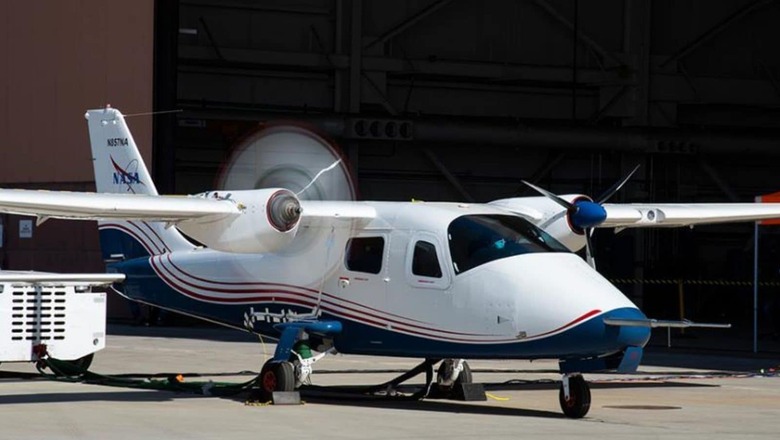
views
Within a few months, NASA’s first all-electric plane X-57, driven exclusively by batteries, will take flight.
The lightweight, experimental plane is supposed to consume less power and produce less noise over the same distance than a typical plane powered by fuel. The aircraft is now being prepared for its first test flight in the desert east of Los Angeles. It is believed that X-57 could revolutionise the future of the aviation sector by transforming it into something eco-friendly.
The X-57 also called Maxwell, named after James Clerk Maxwell, is designed on a four-seater plane constructed by the Italian Tecnam corporation.
The benefit of using a pre-existing design is that data from the baseline model, powered by traditional combustion engines, can be compared to data from the same model that is powered by electricity.
However, NASA is expected to share all details related to X-57, which is actually an opportunity for pushing electric propulsion and wing design to their limits, with the private sector and with academia, as part of a bigger industry effort to build pathways for future electric aircraft.
It is also part of the $3.7-billion effort inside NASA’s $22-billion budget to focus on Earth-bound issues, specifically how electric-powered vessels may battle such mounting worries as air pollution and global warming.
According to a study, aircraft are one of the fastest-growing sources of carbon emissions in the US, with domestic aviation alone increasing by 17% since 1990. Aviation accounts for almost 10% of all greenhouse gas emissions from the transportation sector in America.
So, X-57’s goal is to show that it can outperform existing aeroplanes in terms of efficiency, resulting in lower operational costs and carbon emissions. It should be also noted that NASA does care about going “green” because its research could lead to advancements in the rapidly increasing sector of commercial aviation, both in the US and overseas.
It is noteworthy that thousands of rechargeable lithium-ion batteries are used to power the plane’s motors and propellers. NASA collaborated with California-based Electric Power Systems to design the X-57’s energy source, which employed off-the-shelf lithium-ion cells similar to AAA batteries to create a lightweight power system.
Another distinguishing characteristic is a motor-and-wing design that NASA refers to as LEAP (leading-edge asynchronous propeller technology). For takeoffs, there are twelve high-lift motors along the leading edge, and two bigger 60-kilowatt motors on the wing tips kick in at cruise altitude and speeds of up to 138 mph.
Electric power is distributed among many motors incorporated within the 3,000-pound craft, resulting in a five-fold reduction in energy required compared to a gas-powered plane of the same size. It is expected that this would cut the flying times and operational expenses by 40%.
While several countries have been working on flying electric aircraft, NASA has shared the results of its ground test successes and failures with the industry to help the sector. Now, the US agency and test pilot Tim Williams are eagerly waiting for X-57’s initial flight.
Read all the Latest Auto News here


















Comments
0 comment